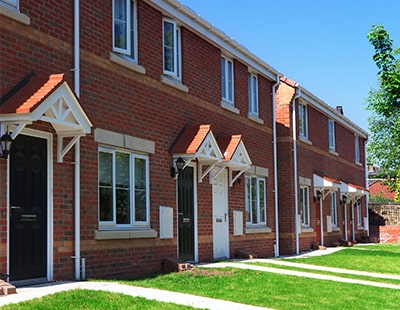The Build to Rent (BTR) market has traditionally focused primarily on young professionals, with developments generally comprising apartment blocks with bolt-ons to attract this demographic.
Take The Keel, for instance, a former tax office in Liverpool, with its gym and designer communal areas, or London’s Wembley Park featuring unique homeworking spaces such as retro campervans. Both are prime examples of how BTR has maximised its image as an exciting, amenity-rich model for the young professional market – and an attractive offer for investors.
That’s why investment in the BTR sector is now at record levels, with £1.7 billion in deals agreed in the first quarter of 2022. This builds on growth witnessed last year, where a record £4.3 billion was invested and annual spend was up 19% on 2020 levels.
What’s noticeable, too, is the changing nature of the profile of investors in this market. Whereas investment houses and pension funds were relatively long-standing investors, new entrants to BTR have included high street names like Legal & General, Lloyds Bank and John Lewis.
Indeed, the latter has already earmarked 20 initial sites and is set to unveil its first two planning applications in Greater London shortly.
My view is that the customer service expertise of the retail giant will have a huge impact on the development of the suburban build to rent sector (SBTR) in particular.
Compared to the amenity-rich model of the young professional market, the SBTR sub-sector is lagging behind. Uninspired, basic builds, standard facilities and a lack of bolt-ons to appeal to families is the norm. In the US SBTR market for example, multi-family residential is a gold standard, with many developments including lawn care, community gyms and even communal swimming pools.
The entry to the market of the nation’s favourite retailer to the middle classes could change all that. I predict that if more retailers like John Lewis start to invest in SBTR, better home design will be the result – turbochanging the SBTR market.
John Lewis already says that tenants of one of their homes will have the option of renting their property fully furnished with the department store’s products or using their own. Some developments are expected to come with a concierge service and include a Waitrose convenience store as part of the development.
Covid has changed the way our homes are being designed as the hybrid working model becomes ingrained. And as BTR aimed at young professionals has communal work areas, SBTR will deliver its own bespoke solution: families prefer space in their home, so standalone SBTR homes will offer a much more spacious and comfortable living experience than apartments and contain all the modern tech for hybrid working.
I can see more extensive use of smart home technology covering not just homeworking needs but lighting, security, entertainment and climate. Sustainability will become more important – solar panels will feature on roofs, with batteries storing the energy for when its needed. Electric vehicle charging points will come with more homes as standard.
Because of the energy price crisis, SBTR developers are already pushing energy cost savings at the top of the list of advantages of new builds compared to old rental stock, whereas previously location and low maintenance costs were the big tickets. Multi-family residential plots could include the likes of outdoor gyms or tennis courts exclusively for residents’ use.
At McBains, we have recently been working on a series of hybrid sites, involving different funding models, which include family BTR housing. For example, we have been appointed to work on such a site in Milton Keynes. SBTR is currently a hugely untapped market. But as Jonathon Ivory, managing director of BTR developer Packaged Living points out, 60% of the country’s renters live in suburban houses. There is a significant proportion in the private rented sector that is aged 35-plus who are getting married, having children and leaving rental accommodation – and who expect be treated well with good customer service and amenities.
Meanwhile, the cost of living crisis has increased the number of people who cannot afford to buy the dwelling they want, but are fed up with rogue landlords and want well-managed homes. SBTR’s moment looks like it has come.
*Peter O’Rourke is Director of Housing and Masterplanning at McBains, a property and construction consultancy








.png)








Join the conversation
Be the first to comment (please use the comment box below)
Please login to comment